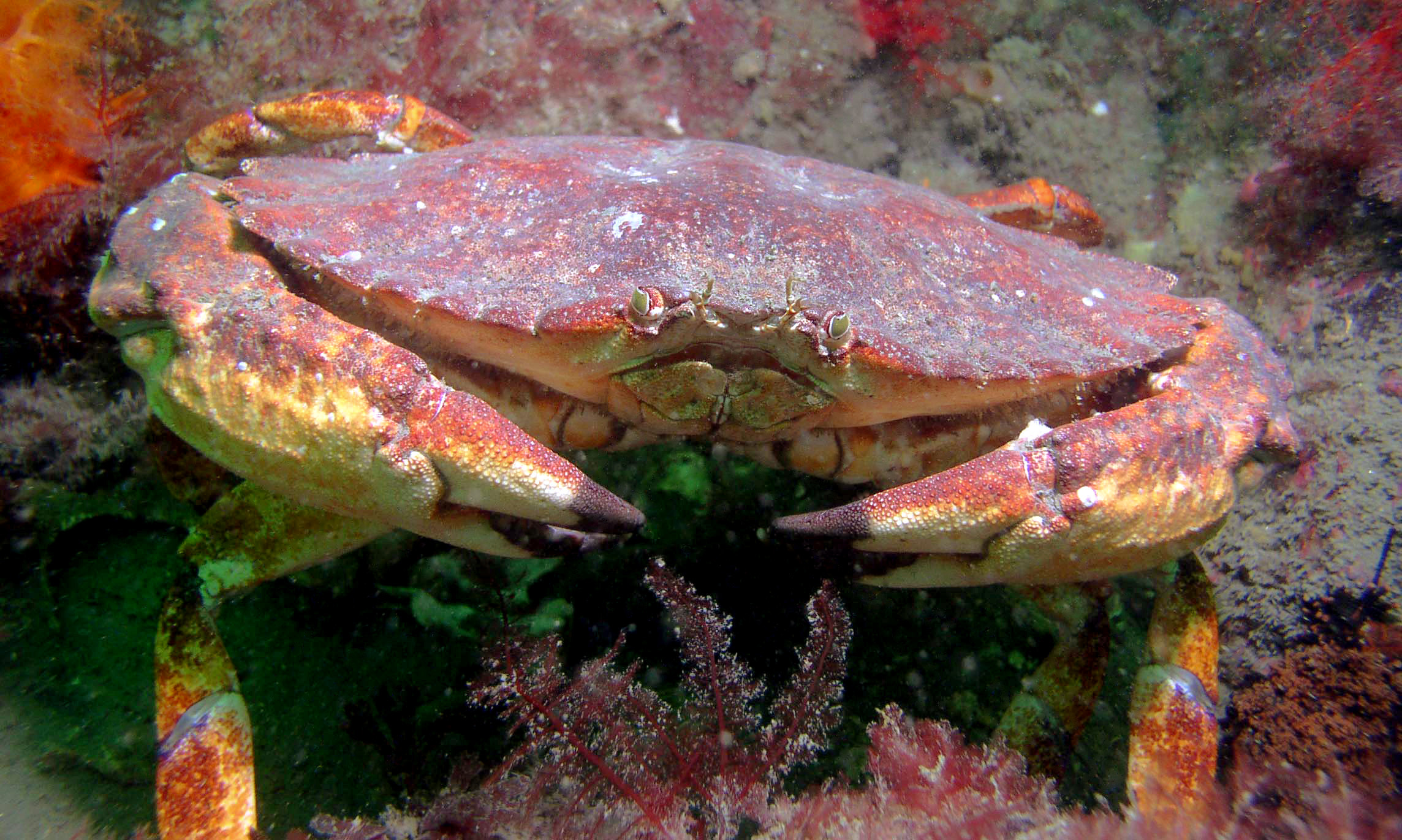- Cancer productus
Taxobox
name = Red rock crab

regnum =Animal ia
phylum =Arthropod a
classis =Malacostraca
ordo =Decapoda
infraordo = Brachyura
familia =Cancridae
genus = "Cancer"
species = "C. productus"
binomial = "Cancer productus"
binomial_authority = Randall, 1839"Cancer productus", commonly known as the red rock crab, is a
crab of the genus "Cancer" found on the western coast ofNorth America .Description
"Cancer productus" has
carapace teeth that are somewhat broad and rounded with teeth between the eyes of nearly equal size and shape. The carapace of "C. productus" is widest at the posterior-most tooth, up to 200 mm wide. Thecheliped s are large with black tips. This species lacks serrations or projections on the ventral side of the claws. Adults have a brick red coloration throughout. The coloration of juvenile "C. productus" is diverse, often white, sometimes with red spots, or zebra striped.Kozloff, Eugene N. (1987). "Marine Invertebrates of the Pacific Northwest". University of Washington Press, Seattle, WA. 511 pp.]Similar species
"
Cancer magister " has serrations on the dorsal side of the chelipeds and lacks black tips. "Cancer gracilis " has a single projection on the dorsal side of the chelipeds and also lacks black tips, and the widest point of carapace is at the second posterior-most tooth. "Cancer oregonensis " has black tipped chelipeds, but has largetubercle s on the dorsum. "C. oregonensis" is also much smaller, such that a "C. productus" of similar size would generally have the striking juvenile coloration.Range and habitat
"C. productus" ranges from
Kodiak Island ,Alaska toIsla San Martine ,Baja California . It inhabits mid-intertidal waters to 79 m depth. [Jensen, Gregory C. (1995). "Pacific Coast Crabs and Shrimps". Sea Challengers, Monterey, CA. 87 pp.]Biology
"Cancer productus" is carnivorous and in
Puget Sound will crushbarnacle s with its large chelipeds for consumption. Small living crabs and deadfish are also eaten. Mating in this species occurs when the female is soft-shelled from October to to June in Puget Sound. The male can often been seen guarding females until molting during this time. [Morris, R.H., Abbot, D.P, and Haderlie, E.C. (1980). "Intertidal Invertebrates of California". Stanford University Press, Stanford, CA. 690 pp.] This species is known to be a favorite prey item of "Enteroctopus dofleini", the giant Pacific octopus. [Hartwick, E.B., Tulloch, L. and MacDonald, S. (1981). Feeding and growth of "Octopus dofleini". "The Veliger" 24(2): 129–138.]References
External links
* [http://www.wallawalla.edu/academics/departments/biology/rosario/inverts/Arthropoda/Crustacea/Malacostraca/Eumalacostraca/Eucarida/Decapoda/Brachyura/Family_Cancridae/Cancer_productus.html|Walla Walla Walla University Marine Inverts Key: "Cancer productus"]
Wikimedia Foundation. 2010.
